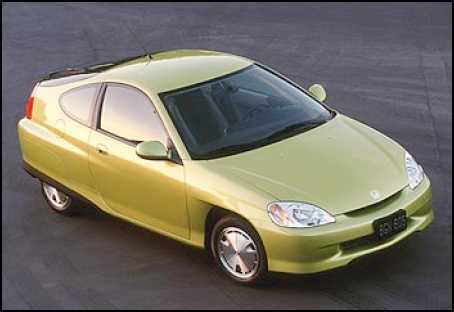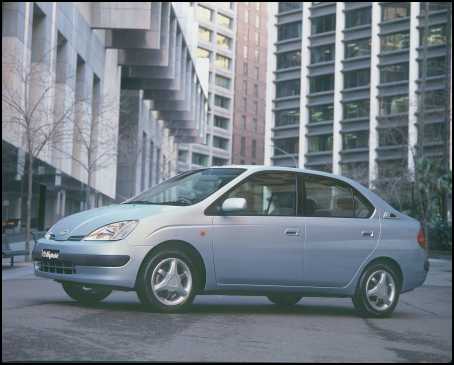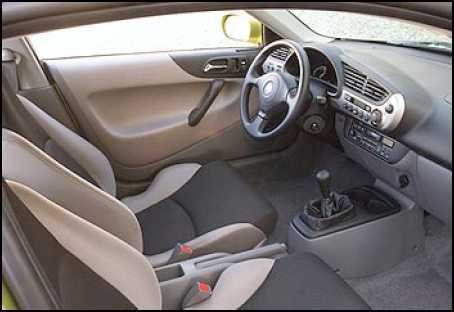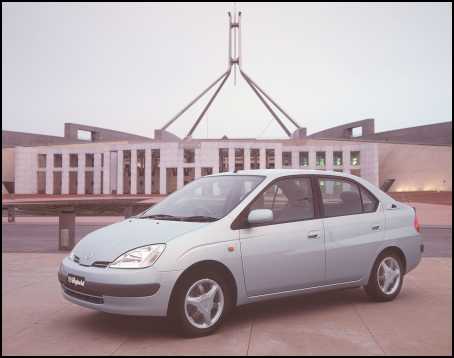MOTORNET: A Tale Of Two Hybrids
A tale of two hybrids -
Honda's Insight and Toyota's Prius touch down
It can be hard to attract attention around Wellington. It would seem that for many capital city dwellers, perfecting the art of cool, collected non-chalance is a must - particularly if you’re part of the ever expanding cafe set. It just isn't done to seem impressed or surprised by anything.

Honda Insight
But one sure fire way to pause the coffee cups of Wellington's sophisticates, and to set tongues wagging, is to brazenly drive around in an electric green car that looks like something from the set of a Hollywood science fiction set. Oh, and it helps to have the name of the car - in this case 'Honda Insight' - written in large black letters down the side of each door.
Of course, getting any attention at all depends on how flamboyant your car is.
Where the Insight literally stopped traffic, Toyota's Prius went largely unnoticed parked outside Wellington's iconic Lido one quiet Sunday afternoon. Its more muted turquoise colour is a little unusual but hardly likely to turn heads. A few sharp eyed punters noticed the PRIUS number plate but for the most part, and probably due to looking like a cross between an Echo and a Corolla, it was overlooked in a sea of Japanese anonymity.

Toyota Prius
So what have these two seemingly different cars got in common? For a start, neither of them is on sale in New Zealand. If they were they would each cost about $50,000. More interestingly, to get from Wellington to Auckland in either would cost you about $25 in petrol. That's only about 25 litres of fuel for 650 kilometres of motoring.
So how do they do it? It's simple really. Both cars are hybrids, combining conventional petrol engines with battery power to achieve remarkable fuel efficiency.
The Insight is powered by a three cylinder, one litre VTEC petrol engine producing 50kw of power, and boosted by a DC electric motor producing 10kw. In other words, the car is pretty much driven by the petrol engine with the battery acting like a turbocharger to provide real world acceleration without blowing the fuel figures.
The result is one of the most environmentally friendly cars in the world. With a CD (drag co efficiency) of only 0.25, and weighing a mere 820kgs thanks to its mainly aluminium body and large number of plastic parts, it goes further than any other production car has gone for the environment. The Insight's exhaust emissions are 50 percent cleaner than the current Californian emission standards - and it manages a staggering fuel economy of 29.1 litres per kilometre.
Of course the mere concept of a battery-powered car can raise eyebrows. Around my rather conventional office it caused hysterics. Quips ranged from the predictable - 'Did you remember to plug in your car last night?' to the absurd - 'I didn't realise electric roller skates were making a comeback!' Sadly, some poor souls genuinely did think the cars needed nightly charging....
And that could be a big problem. They say that perception is reality and if people can't come to grips with a car that uses electricity to help it go, then sales success could be hard to find. Interestingly, in Japan both cars sell reasonably well and the Insight is also making headway in the US market - but then air pollution in both those countries is significantly worse than most parts of New Zealand.
A shame in a way because these cars are really quite exceptional. Far from feeling like a city runabout the Insight is more like a sporty two-seater Civic with good power on tap, even pulling pretty well up steep hills. Its low-slung racy body adds to its feel of eagerness and the firm(ish) ride helps gives the car remarkably good handling.

Honda Insight – Interior
The sporty overtones continue inside with neon green seats, white backed instruments and a slick (if tall-geared) manual transmission. The cars environmental theme hasn't been at the expense of safety though, and it comes equipped with ABS brakes and dual airbags with Honda claiming the Insight meets all major international crash standards.

Toyota Prius
The Toyota is a slightly different kettle of fish. Although a hybrid like the Honda, the Prius differs from the Insight by running primarily on battery power with its petrol motor charging the batteries when they get rundown. During normal driving the petrol engine is operating most of the time, but during stop/start driving, say in a traffic jam, the petrol engine may hardly be needed at all.
And it does make a difference to how it feels on the road with the car seemingly having more in common with a golf cart than a car. The automatic transmission lever is mounted on the dash next to the steering wheel and while it's easily engaged it's as if you are moving off rather than driving off. The light, uncommunicative steering heightens the slightly unreal feel but, like anything, you get used to it. In fact, while it didn't handle quite as well as the Honda, the Toyota felt more relaxed, especially on motorways. It is also as well as, if not better equipped, than the Honda with airbags, ABS, electrics etc. A real talking point is the TV screen in the centre console, which tells you everything you need to know about the car as well as allowing you to watch the soaps. Of course, you do have to be able to speak Japanese....
Looking at these two cars you can see the different approaches their designers have taken. Honda have built a car that is determined to prove its environmental credentials - even using recycled plastic drink bottles to construct lighter seat frames. But while its looks are a talking point, it isn't all that practical. Toyota, on the other hand, have built a car that doesn't go to quite the same extremes, combining significantly reduced fuel emissions with five seats and a decent sized boot. Ironic really. The Honda looks outrageous and feels really quite normal, while the Toyota looks conservative and feels anything but.
So your thinking you might pop down to the
dealer for a test drive... Think again.
Neither
manufacturer has plans to market these cars here - in the
immediate future anyway. Toyota New Zealand's Bruce
Buckland says there is a definite market in New Zealand for
electric-hybrid cars, but the cost could be a serious factor
saleability and infrastructure would be expensive to
establish. He has a point. Even with lower fuel costs, would
you pay 50k for a car that does much the same job as an
Echo?
Internationally, car manufacturers are relying - at least in the short term - on more sophisticated diesel engines to reduce emissions. Longer term, says Bruce, it is likely fuel cell technology (that will see cars run on hydrogen) will really make the difference for the environment. And with a bit of luck, on our pockets too. "Can I have a dollars worth of hydrogen with that please, I need to drive to Auckland...."
ENDS


 Keith Rankin: Zero-Sum Fiscal Narratives
Keith Rankin: Zero-Sum Fiscal Narratives Eugene Doyle: Chinese Jet Shoots Down France’s Best Fighter; NZ And Australia Should Pay Attention
Eugene Doyle: Chinese Jet Shoots Down France’s Best Fighter; NZ And Australia Should Pay Attention Ian Powell: “I Can Confirm They Are Hypotheticals Drawn Largely From Anecdotes And Issues The Minister Has Heard About.”
Ian Powell: “I Can Confirm They Are Hypotheticals Drawn Largely From Anecdotes And Issues The Minister Has Heard About.” Gordon Campbell: On NZ’s Silence Over Gaza, And Creeping Health Privatisation
Gordon Campbell: On NZ’s Silence Over Gaza, And Creeping Health Privatisation Richard S. Ehrlich: Pakistan & China Down 6 Indian Warplanes
Richard S. Ehrlich: Pakistan & China Down 6 Indian Warplanes Keith Rankin: War In Sudan
Keith Rankin: War In Sudan